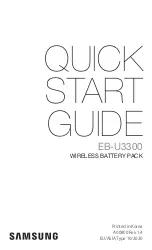
7
Operation
Prior to turning on the unit, you must decide on which charging profile, 2 or 3 stage charging,
to use. To help you decide, please see the following section entitled 2 or 3 Stage Charging to
determine the charging profile.
Once you have decided on the charging profile you must set the switch to the correct posi-
tion. To access the switch remove the cover plate (secured by 2 screws). Set the switch to
the correct position as shown on the label. When you are done, replace the cover plate and
securely tighten the screws.
To turn the unit on, simply move the power switch to the ON position. The alarm buzzer will
sound and the Low Output LED will come on briefly, and then the green OUTPUT ON LED will
illuminate.
When the unit is first turned on, it will charge the batteries at a constant current and the
charging light will be on. After a period of time, which may be minutes to hours, the batter-
ies will reach the float voltage at which time the charging light will go off, and the charging
current will reduce as necessary to maintain the batteries at that voltage. You may check this
OUTPUT CONNECTIONS
Two Positive output terminals and two Negative output terminals are provided. Connect only
one wire to each terminal. Ensure that the total average load connected does not exceed the
continuous current rating of the unit.
To ensure spark free connections the power switch must be in the OFF position prior to making
the connections to the battery bank(s).
The unit may be hooked to 1 or 2 battery banks. Hook up the battery bank(s) as shown below.
If you are hooking up 2 battery banks keep in mind that they MUST share a common ground!
If you are going to hook up one battery to a 12Vdc charger, you must hook up the outputs in
parallel as shown below in the left hand drawing!
OUTPUT 1
OUTPUT 1
OUTPUT 2
OUTPUT 2
BATTERY
BANK #1
BATTERY
BANK #1
BATTERY
BANK #2
High quality digital meters can be added to the charger (factory installed only). Both outputs
can be monitored for current and voltage.
Meters


































